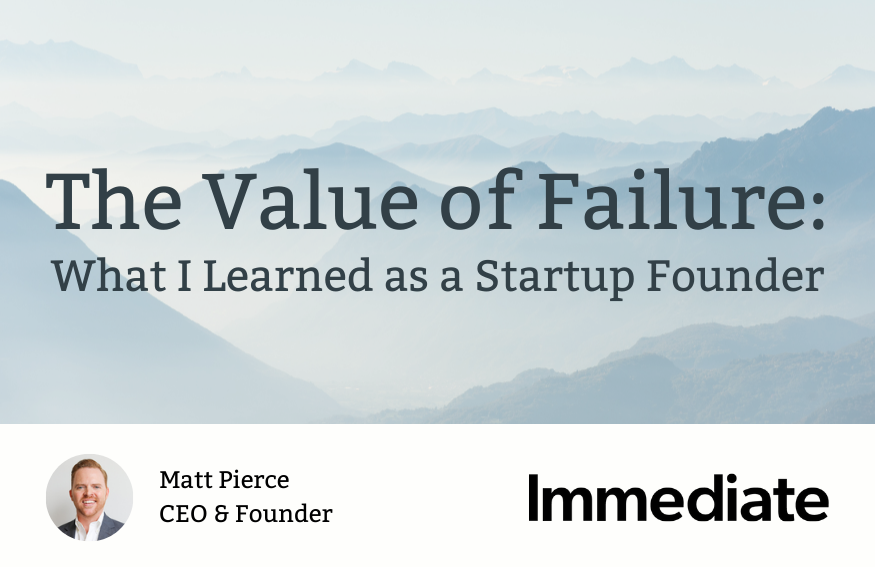The Software as a Service (SaaS) industry is growing at a remarkable speed. With new startups constantly entering the market, your company must work harder to stay ahead of the competition.
But why is SaaS experiencing such large amounts of growth? Part of the reason is that organizations worldwide want versatile and easily accessible software solutions without running programs installed on their computers.
Your SaaS solution can position itself nicely to take advantage of this trend toward cloud-based products. You have an opportunity to market to an audience already looking for what your business offers as more companies, organizations, nonprofits, and even government entities search for software that’s easy to use while providing greater security protocols.
On the other hand, you could fall behind if you don’t continuously look for added advantages in the marketplace. You can’t rely on the general SaaS growth trends to help you meet all your company goals. Instead, focus on identifying other trends within the industry that competitors might miss.
Here, we cover four major SaaS tech trends that are on the horizon. Educate yourself about these trends, analyze the data, and then ask yourself how your company can use them to your advantage going forward.
Four Current SaaS Tech Trends To Follow
These are four of the most current trends you should be aware of:
- AI and Machine Learning
- APIs and Integrations
- Centralized Analytics
- Enhanced Mobile Optimization
Let’s dig into the details.
1. AI and Machine Learning
It’s incredible to think about the amount of data we can collect in today’s technological world. Humans have trouble keeping up with the barrage of information, sifting through the data points, and making choices on the backend about how to use it all most effectively.
Therefore, It makes sense to have artificial intelligence analyzing the data and helping to make the correct decisions.
For example, from a marketing perspective, machine learning offers tremendous opportunities to personalize messaging and create a highly individualized experience for prospects and customers.
Artificial Intelligence
Autonomous, self-learning artificial intelligence (AI) must come first in our list of SaaS industry trends. Its impact is already here, and it will continue to grow in importance over the next several years.
AI’s market value sat at over $62 billion in 2020. Grand View Research estimates that this market size will grow at a compounded rate of 40.2% each year until 2028. That’s an incredible amount of growth that could generate an astounding $800 billion or more within the next seven years.
Artificial intelligence technology can support human capabilities, automate repetitive action items, and do the following within the SaaS industry:
- Improve efficiency
- Optimize business processes
- Increase productivity
From a business perspective, artificial intelligence gives us a higher degree of interaction and responsiveness between our technologies, customers, and companies.
Software developers use artificial intelligence to develop high-tech features that make it possible to pull in and analyze all types of helpful information.
For example, AI-driven data notifications can help you manage multiple dashboards and KPIs that you can’t possibly stay on top of on your own without spending hours poring over spreadsheets. With AI, you’re notified immediately after the artificial intelligence algorithm detects anomalies. The data notifications then bundle it into easily understandable sets of patterns and trends. Within seconds, minutes, or hours, you can have a report that tells you something significant occurred.
No longer is it necessary to scramble when something unexpected happens. AI works to uncover the situation, notify you immediately, and allows you to step in to make course corrections faster than competitors who fail to grasp the enormity of this SaaS trend.
How Artificial Intelligence Will Disrupt the SaaS Industry
AI can help SaaS businesses improve security, achieve advanced levels of value from data sets, augment human creativity, and personalize and automate services.
Natural language processing, for instance, can process human voice control and speech patterns automatically. This type of AI application offers practical solutions with personalization as you strive to provide customers with improved customizations and user experience.
SaaS security becomes improved when AI automation recognizes patterns that indicate potential threats to the systems.
In short, AI increases the speed at which operations and processes work. This advantage allows businesses to get fast answers to questions, make quicker decisions, and increase responses to all types of situations.
Machine Learning
Machine learning represents an artificial subset that can automate customer service applications and offer improved responsiveness. Examples include the automation of your SaaS onboarding process or using AI-powered chatbots to answer customer questions or direct them to human representatives.
This technology has the potential to make improvements in your paid ad campaigns. Over time, machine learning understands which lead profiles to show or to not show ads based on past data that reveals which profiles convert best with the least amount of ad spend.
Further, machine learning can improve your SaaS product. You’ll have the ability to train your software to learn at every turn. It recognizes, logs, and analyzes every interaction or task, becoming more efficient with each new data point.
You can also use AI and machine learning to improve your internal operations via sophisticated communication models.
2. APIs and Integrations
A growing SaaS trend is to integrate new products with existing business systems. The Application Programming Interface (API) is already widely used and has been for several years in the software development world.
However, more SaaS companies recognize the crucial role played by API integration technology and how important it is when working to achieve benefits such as:
- Faster time to market
- Product stickiness
- Decreasing churn rates
While some businesses might use cloud platforms to migrate data, many other companies would prefer to improve an already-existing infrastructure by integrating data into it directly.
In the past, the problem with this has been that SaaS companies often failed to provide an integrated solution. This only served to complicate the process, confuse users, and then lose those disappointed customers.
From there, many SaaS products underwent adjustments where APIs redirected customers over to third-party platforms to connect various systems into their SaaS offerings. These readjustments worked to some extent, as they saved resources and time while relying on third-party integrations. It shortened go-to-market time frames and helped developers focus on other product enhancements.
Avoiding the Third-Party Dependency
Today’s trend is a movement toward providing even greater integration capabilities instead of relying on customer redirection to third parties.
The 2021 State of API Integration Report reveals that over half of all businesses say their API and integration strategy is critical to success going forward. APIs will stand at the center of the stage when it comes to organizational digital transformations. This trend will lead to further integrations between SaaS products and existing infrastructure components. As a result, APIs will play an ever-increasing role in how software gets developed and brought to audiences over the next several years.
Another feature of this SaaS trend is that some companies will focus less on only developing a product and more on becoming the platform provider. To accomplish the goal of becoming the platform provider, SaaS companies need to establish longer-lasting relationships by using APIs to integrate with partners more effectively. Some companies see API as the actual product as they begin approaching API with a direct monetization plan.
Here are three useful questions to ask yourself when trying to promote seamless integrations with vendors.
- Will our data remain protected during the integration process?
- Is it possible to integrate legacy systems used by our organization?
- Is the provider giving us the opportunity and resources necessary to integrate our existing business system with the SaaS?
Ask yourself how the APIs and integration trend affects your SaaS business. Is it something you’re already taking advantage of in a positive manner? Or have you allowed the company to fall behind in this crucial area?
Use the answers to these questions to guide you into the most effective API approach.
3. Centralized Analytics
The data-driven SaaS trend toward a centralized analytics model will dramatically impact how company owners use analytics to understand users and their needs better. Combined with AI and machine learning already discussed above, analytics will become a higher priority with SaaS platforms, helping to improve data-driven and business intelligence decisions.
Using a centralized analytics model allows users to view all data from one point of view as an organization. This enables teams to discover insights together, such as via performance dashboards. Each team member can access all vital business data and contribute to improvements.
This centralized analytics model for SaaS companies also provides users access to vital data at any time from any device type.
Let’s explore the difference between centralized and decentralized analytics so you can see why the trend is moving toward a centralized model.
Decentralized Analytics Definition
This model keeps all departments on their own with projects, functions, and analyzing data. The marketing department interprets its KPIs and acts on the result. Sales, customer service, and other departments do the same thing. The challenge here is that it’s impossible to recognize how each department’s actions affect the quality of results in another department.
Centralized Analytics Definition
Data analysis sits in the hands of a core team of analysts. One team looks at data across all departments and figures out how one team’s KPIs and analytics relate to other groups. From there, they communicate with each department and influence wise decisions across the entire organization.
Here’s what moving to centralized analytics impacts:
- Decision-making
- Operational costs
- Company goals
- Employee growth
Decision-Making
Making decisions based on decentralized analytics means that department heads decide what to do based on what they see happening within their unit. One positive aspect of this is that these leaders have closer contact with their team members and customers who interact with the department.
Using centralized analytics, however, allows each department head to interact with other departments as well. Viewing the data together helps the entire organization solve long-term problems more effectively.
Decisions might indeed slow when information needs to flow through additional layers of communication. However, the greater benefit enters the picture when decisions aren’t made in a siloed manner.
For example, a sales team might cause the customer service team great pains due to sales language that doesn’t match product deliverability. But if the sales manager is on the same page as the customer service manager, they can look at the negative customer satisfaction data to determine the cause.
Operational Costs
Increased chances for redundancy exist when analytics resources and expertise get spread across an organization’s departments. There’s less transparency about what each team does and how that relates across each department.
The decentralized analytics model makes it easier to tailor KPIs and budgets to the specific needs of each department. However, costs typically go up when opportunities to streamline resources become hidden within unshared data.
This situation gets resolved with centralized analytics because the core data analytics team looks at the processes and methods used by every department. This improvement in oversight helps pinpoint otherwise missed opportunities to cut operational costs.
Conversations occur between all teams when implementing this analytics model. Risk does exist, though. Some analytics operations might not fit one specific department, resulting in potential sunk costs. The lines of communication should fix this situation and help all leaders find the best organizational solution.
Company Goals
It’s impossible to attain overall company goals without synergy across all teams. Using centralized analytics ensures that each department understands the long-term vision from the CEO’s perspective.
From there, each team’s leader can analyze important data, discuss it with other leaders, and make sure that the KPIs and goals for each department work together to help the company move toward goal completion.
A decentralized analytics approach doesn’t allow for this integration between teams. The company’s long-term focus can easily suffer as a result.
Employee Growth
The increased sharing that occurs when employing a centralized analytics model equates to more opportunities for employee growth. It’s far easier to recognize hidden talents that exist within certain employees when each department head shares data, KPIs, and results.
In summary, centralized analytics represent a vital SaaS tech trend to integrate into your business.
4. Enhanced Mobile Optimization
The world is officially mobile. Therefore, you must focus on mobile optimizations to compete going forward. This is an important SaaS tech trend to heed because your customers want to operate critical aspects of their businesses directly from smartphones and tablets. Employees are also in the mindset to conduct work using mobile dashboards.
COVID-19 only propelled this trend into mobile-dominated work as more employees do their jobs remotely.
SaaS developers who embrace a mobile-first thought process will set themselves up to brainstorm additional mobile solutions and become positioned as leaders in their industry.
While AI, machine learning, or centralized analytics might remain under the radar of some SaaS founders, mobile optimization isn’t a SaaS trend that’s hidden. Your competition is fully aware that customers expect additional mobile features and solutions. Don’t get left behind by ignoring this area of your business.
Businesses that think long-term will also use mobile optimization tools to create products that work more effectively for hearing- or sight-impaired customers, older cohorts, and other verticals.
Enhanced Mobile Optimization Areas To Focus on
It will serve you well to focus on these areas:
- Using augmented and virtual reality technology with mobile experiences.
- Allowing users additional forms of feedback for updates and improvement recommendations via platform or in-app options.
- Improving the user experience on mobile devices for people with learning difficulties, sight problems, hearing issues, and autism.
- Focusing on making mobile functionality and features more responsive in the form of accessible filtering possibilities, one-swipe options, and improved task optimization.
- Increasing personalization capabilities on mobile apps. This is an area to merge with AI and machine learning technologies.
Conclusion
Now it’s your turn. You’ve learned four key SaaS tech trends set to disrupt the entire industry over the next several years. Your job includes selecting which area to focus on first and then implementing it in a way that helps you compete more effectively.
If you have additional questions about how to best tackle and implement these core SaaS trends, we encourage you to reach out to us for help. Visit our Studio page to learn more about HVL Services. We’ll take the time to hear your concerns about the future, answer your questions, and then show you how we can take your ideas to new heights.




